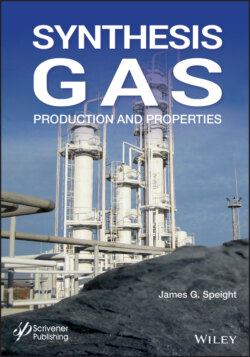Читать книгу Synthesis Gas - James Speight G., James G. Speight - Страница 26
1.4.4 Technological Factors
ОглавлениеIn region after region, there are reports of (i) aging and depleted fields, (ii) poor quality – heavy oil, (iii) the need for enhanced recovery methods, and (iv) new areas turning out to be dry well, leading to the claim that peak oil has arrived. For example, for whatever reason, the fields in Alaska, the former Soviet Union, Mexico, Venezuela, and Norway (North Sea) are all claimed to be past their peak. It is grudgingly admitted by the peak oil theorists that there is (or there may be) a (remote or even unlikely) possibility of new finds of oil fields off the coast of West Africa, but their development is still years away, and these new finds will not be on a scale capable of making a difference. It is also further claimed that the only producers with an oil resource which may be capable of keeping oil flowing into the world market at a roughly constant level are the Middle East OPEC five – Saudi Arabia, Iran, Iraq, Kuwait and the United Arab Emirates (Fleming, 2000). However, because of much speculation on the part of the peak oil theorists, there is some difficulty when it comes to projecting the timing of a peak in oil production because (i) technological advances, (ii) increased efficiency in recovery methods and hence reduced or stable recovery economics, and (iii) environmental challenges make it unclear how much additional oil can ultimately be recovered from proven reserves or from hard-to-reach locations and from non-conventional sources.
Worldwide, industry analysts report that deepwater (depths of 1,000 to 5,000 feet) and ultra-deepwater (5,000 to 10,000 feet) drilling efforts are concentrated offshore in Africa, Latin America, and North America, and capital expenditures for these efforts are expected to grow through at least the 2020s decade. In the United States, deepwater and ultra-deepwater drilling, primarily in the Gulf of Mexico, could increase the production of crude oil but at deepwater depths, penetrating the earth and efficiently operating drilling equipment is difficult because of the extreme pressure and temperature (Speight, 2015b).
Ultimately, however, the consequences of a peak and permanent decline in oil production could be even more prolonged and severe than those of past oil supply shocks. Even then the decline rate is the subject of speculation but like death and taxes, the decline rate is happening! The most important variable is the amount of oil left in the reservoirs but, even then, this is subject to debate and error leaving the decline rate for fields in production difficult to assess (Eagles, 2006; Gerdes, 2007; Jackson, 2006, 2007). At best, generalities can be calculated. For example, for current fields in production a low decline rate would be followed by a more moderate decline rate which would result in peak oil in the near future.
